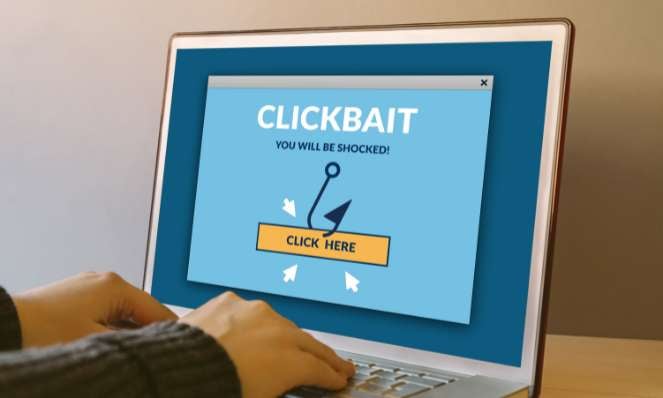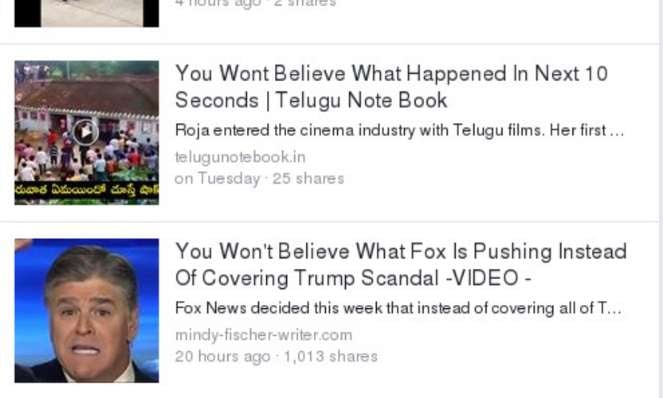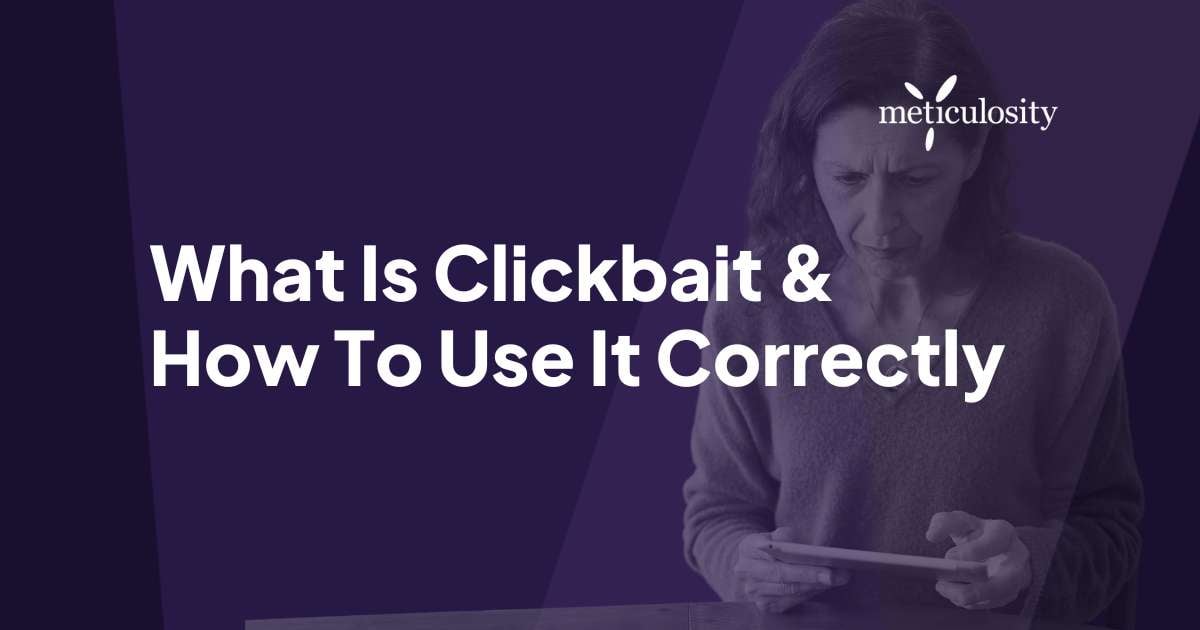Have you ever been tricked by a clickbait headline or clicked an ad you knew smelled fishy while browsing the web or social media?
You may have seen annoying or shocking ads that cause you to stop scrolling and find the click-through irresistible. If you recognize this scenario, you’ve likely seen a clickbait headline.
While many people consider clickbait manipulative or unethical, when used correctly, it can be a powerful tool for driving traffic and engagement.
Clickbait is a term that's been around for quite some time, but it's still one that's often misunderstood. Clickbait involves sensational or misleading headlines to entice readers to click through to an article or website. While many people consider clickbait manipulative or unethical, it can be a powerful tool for driving traffic and engagement when used correctly.
In this blog post, we'll explore clickbait and how you can use it effectively without resorting to shady tactics. We'll also provide tips on crafting compelling headlines that grab attention while delivering value to your readers. Whether you're a content creator looking to increase your audience or simply curious about the world of clickbait, this post has something for you. So, let's dive in!
What is Clickbait?
The term "clickbait" describes headlines or content intended to catch readers' attention and persuade them to click on a link, frequently to make money through advertisements.
Regardless of whether the content is meaningful or pertinent to the viewer, it frequently employs sensational language, provocative graphics, or false promises to entice clicks. In online media, where publishers are vying for readers' attention in a crowded market, clickbait has become increasingly common. Before clicking on a link or sharing content with others, it's crucial to be aware of clickbait methods and critically evaluate the article.
Clickbait Ads and Titles
Clickbait has become infamous in digital marketing. However, clickbait ads and titles can be very effective when done correctly, but they can also backfire if you're not truthful.
So, it can be one of the best tactics to get people's valuable attention when done without the intent to deceive.
Examples of Clickbait
Here are 3 clickbait examples that had shocking and amazing results. Let's examine how the trap works. Typically, clickbait headlines work in two parts.
The first part reveals the plot and is very catchy. The second part then says there's more to the plot, and the outcome is shocking. So, the bait lies in the second part as it challenges your imagination by using terms like:
- "you won’t believe..."
- "shocking result"
- "X things you'd never..."
- "too good to be true"
- "[trusted authority person] reveals brilliant tip..."
Clickbait Example 1
/Imported_Blog_Media/clickbait-lion-1.jpg?width=750&name=clickbait-lion-1.jpg)
Ad Example Synopsis
If this story were true, the man would be an expert trainer; otherwise, it would have ended badly for the man or the lion. However, the clickbait ad doesn’t allow you to think that way - it makes you want to know the outcome.
Part 1: Why would a man try to hug a lion - that's crazy!
Part 2: You won't believe what happens next - I've got to know [click].
Clickbait Example 2
Ad Example Synopsis
We all most likely have many things other than leftovers in our freezer. So, the clickbait ad makes it seem like I'm an offender, and you've just got to know.
Part 1: Wow, there are things that you can never put in the freezer!
Part 2: And I probably have #5 in my freezer right now! - I've got to know [click].
Clickbait Example 3
Ad Example Synopsis
Barbara Corcoran, the millionaire real estate guru from Shark Tank, says she's revealing a tip to pay off my mortgage. So, the clickbait ad targets all homeowners who would love her insider tip.
Part 1: Say that an authority figure has "revealed" an insider tip for homeowners.
Part 2: You can pay off your mortgage ASAP. Barbara's a real estate expert, so she must know the insider secret - I've got to know [click].
How Does Clickbait Work?
The primary objective of clickbait is to drive traffic to a particular website or platform, often to generate advertising revenue or increase user engagement metrics.
Here's how clickbait typically works:
1. Attention-Grabbing Headlines
Clickbait headlines use sensational language, fascinating questions, or outlandish assertions to draw the reader's attention. Users are compelled to click and learn more because they are frequently ambiguous or incomplete, which arouses curiosity or mystery.
2. Provocative Thumbnails or Images
Clickbait articles or videos frequently include eye-catching thumbnails or images that are visually appealing or provocative in addition to the title. The user's attention is drawn to these graphics, which in turn prompts them to click on the content.

3. Exaggeration or Misrepresentation
The actual information or story is frequently exaggerated or misrepresented in clickbait content. The content's significance or impact may be overstated in the headlines, giving users the impression that there will be something more surprising or thrilling than what is actually shown.
4. Curiosity Gap
By merely offering a small amount of information in the headline—either interesting or incomplete—users are persuaded to click in order to fill the knowledge gap. This psychological phenomenon is known as the "curiosity gap." This strategy exploits people's inborn curiosity and need for resolution.

5. Viral or Trending Topics
Clickbait often capitalizes on popular or trending topics that are already generating a lot of attention. By aligning their content with these subjects, clickbait creators aim to ride the wave of existing interest and increase the likelihood of users clicking on their content.
6. Disappointing Content
Clickbait headlines frequently fail to deliver on their promises, which can be seen as a common trait among online content. Sometimes, the articles or videos they refer to may not be particularly worthwhile.
7. Revenue Generation
Sites or platforms that rely on advertising revenue frequently employ clickbait techniques to attract a high traffic volume. This can lead to increased ad impressions or clicks.
How to Use Clickbait Correctly
People can use clickbait techniques for both good and bad purposes. On the good side, you promote quality content to a large audience. In the middle, you promote average content virally for the sole purpose of generating revenue.
It’s possible to use clickbait ads and attractive headlines to boost your website traffic. Here are five tips that will help you use clickbait-y headlines to your advantage:
1. Clickbait Headlines and Titles: Don’t Be Misleading
One of the biggest reasons many readers dislike clickbait-y articles is that the headlines often don’t accurately represent the content. When crafting your headline, ensure your content delivers what the reader expects. Never publish a headline simply to entice readers into clicking through – doing so will foster distrust among those who may be potential customers.
2. Know When to Avoid Using Clickbait
The popularity of social media has made writing interesting headlines even more essential, as many readers will share content without even reading the article. However, using clickbait-y headlines to capture readers’ attention is not always necessary – simple, informative headlines can be just as effective.
When creating headlines, focus on what appeals to your audience. Many clickbait sites use headlines to drive traffic and increase advertising revenue, but your business may not rely on that source of income.
If ad revenue isn’t a concern, don’t feel obligated always to use a clickbait-y title. A straightforward title that leads to valuable content will be the most effective.
3. Be Aware of Facebook’s Rules
The largest social media network in the world, Facebook, has defined several rules for using clickbait content. Online marketers should look to Facebook for guidance when crafting headlines, blog posts, and other content.
In 2017, Facebook introduced new algorithms that would penalize publishers who use misleading or vague headlines with the sole purpose of garnering clicks. Posts considered too clickbait-oriented will appear less often in News Feed and may even have a lower position.
4. Don’t Add Call-to-Actions to Headlines
Readers click on headlines when they expect the content to be informative and engaging. While including a call-to-action within your content is fine, a CTA should never be part of a headline.
Pitching to potential customers through your headline can significantly decrease the number of clicks your content receives.
5. Avoid Taking Advantage of a Tragedy
When a newsworthy tragedy has just occurred, it’s tempting to use the event to bring more readers to your website. Known as “newsjacking,” this practice involves inserting your brand into the news, which can grab people’s attention while they’re already interested in a story. Newsjacking can reflect poorly on your company and can cause a public backlash.
While newsjacking a tragedy is usually in poor taste, relating your brand to a non-tragic event can be effective. Exciting events like the solar eclipse or an upcoming sporting event are great opportunities to showcase an upcoming sale or promotion.
The Negative Effects of Misusing Clickbait
While it may generate more clicks in the short term, using clickbait can lead to disappointment and frustration for users who feel misled. This can lead to a lack of trust in the publisher and ultimately harm their reputation.
Additionally, search engines and social media platforms are cracking down on clickbait and penalizing content creators who use it excessively, which can negatively impact their reach and engagement. It's important for content creators to prioritize providing valuable and accurate information over generating clicks through misleading tactics in order to build long-term trust with their audience.
Final Thoughts
Clickbait titles have their place, but assessing your audience’s needs is important before including them in your marketing strategy. Although clickbait can be a valuable tool for increasing traffic to your website or social media page, when utilized improperly, it can also be deceptive or immoral
Instead of utilizing clickbait as a sleazy ploy to get clicks, it is critical to create high-quality material that adds value to the reader. If you need help grabbing readers' attention and bringing visitors to your website, contact our experts today!







